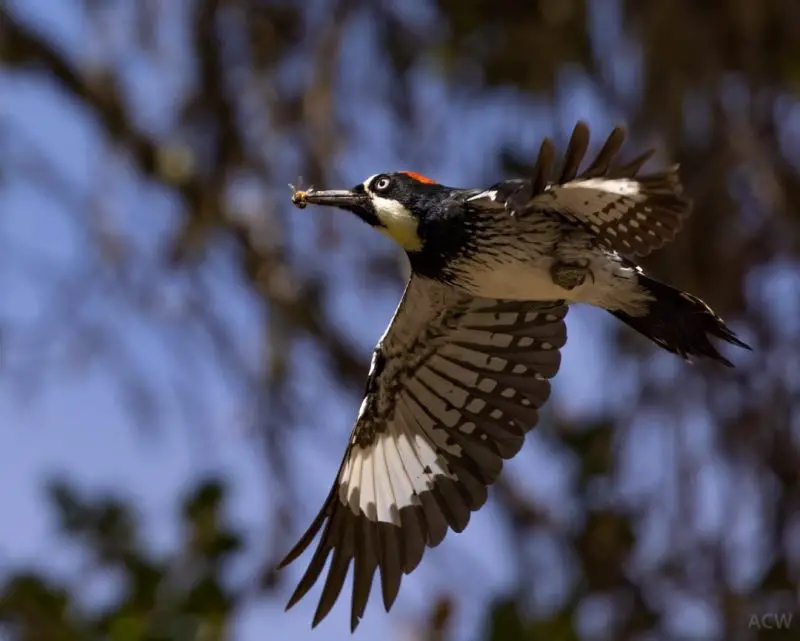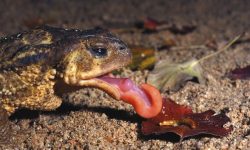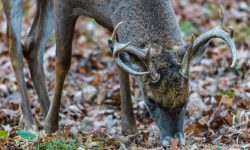Woodpeckers are some of the most fascinating birds in the world—not only for their rhythmic drumming on trees but also for their remarkably diverse diet. Whether you’re a birdwatcher, a backyard bird feeder, or just curious about these charismatic birds, understanding what woodpeckers eat can give you deeper insight into their behavior, habitat preferences, and seasonal adaptations.
In this article, we explore the top 10 foods woodpeckers love most, based on field observations and ecological studies.

1. Insects and Larvae
Woodpeckers are widely regarded as nature’s pest control specialists, and for good reason. Their primary food source across most habitats consists of insects and their larvae, particularly wood-boring beetles, ants, termites, and caterpillars. These high-protein prey items are not only nutritionally dense but often located in places no other birds can reach—deep inside tree bark or rotting wood.
To locate their hidden meals, woodpeckers use an incredible array of sensory adaptations. They rely on tactile feedback from their bills, auditory clues to detect chewing or movement under bark, and vibration sensitivity to sense motion within hollow or decaying wood. This combination allows them to pinpoint the exact location of insect tunnels or larval chambers—sometimes without even seeing the prey.
Once the target is located, the woodpecker transforms into a living chisel. With powerful, shock-absorbing blows, it drills into the bark, creating neat rectangular holes that mark its search for larvae. The skull is reinforced with dense, spongy bone that distributes the force of impact, protecting the brain from damage during repeated strikes.
But the real magic happens after the drilling. Woodpeckers deploy their remarkably long, barbed tongues, which can extend up to twice the length of their bill. Coated in sticky saliva, the tongue acts like a living fishing line, snaking deep into crevices, insect tunnels, or rotten cavities, then retracting with prey clinging to it. In one swift, practiced motion, the woodpecker extracts its catch and swallows it whole.
This feeding technique is not only a testament to the woodpecker’s anatomical specialization but also serves a broader ecological function. By targeting insect-infested or decaying trees, woodpeckers help control outbreaks of pests—such as bark beetles and carpenter ants—that can otherwise devastate forests. Their hunting behavior directly contributes to forest health and biodiversity, making them one of the few birds whose feeding benefits both themselves and the ecosystem around them.
2. Ants
Among all the insects consumed by woodpeckers, ants rank among the most important and abundant—especially for species like the Northern Flicker, which has evolved to become a specialist in ground foraging. Unlike its tree-hammering cousins, the Flicker often descends to open meadows, grassy forest floors, and woodland edges, where it spends hours each day consuming literally thousands of ants.
The Flicker’s anatomy is uniquely adapted for this lifestyle. Its slightly curved bill is perfect for probing into loose soil, flipping over leaves, and digging into anthills to reach the rich network of underground tunnels and egg chambers. There, it finds carpenter ants, its most prized prey. These ants are not only plentiful but also nutritionally dense, packed with protein and lipids essential for maintaining muscle mass and body heat—especially in cooler climates.
What’s more, eating ants may offer benefits beyond basic nutrition. Ants contain formic acid, a compound they use in their own defense. When ingested by woodpeckers, formic acid may help reduce internal parasites, acting as a kind of natural anthelmintic. Some scientists believe that this chemical benefit is one reason why Flickers and other woodpeckers seek out ant-rich areas even when other insects are available.
In the field, watching a Northern Flicker feed is a lesson in patient precision. The bird will stand motionless for long moments, then jab its bill quickly into the soil or a decaying log. Its long, sticky tongue, equipped with barbs and coated in mucous, allows it to extract multiple ants in one motion, often returning to the same foraging patch repeatedly throughout the day.
For Flickers and other species such as the Green-barred Woodpecker or Campo Flicker, ants are not just a dietary staple—they’re a defining feature of their ecological niche. By consuming such massive quantities, these birds act as natural pest controllers, helping regulate ant populations in forests, grasslands, and even suburban yards.
3. Beetles
For most woodpecker species, beetles and their larvae form the nutritional backbone of their diet. These insects are not only abundant in forested habitats but are also packed with high-quality protein, making them an ideal food source for both adult birds and their growing chicks.
What sets woodpeckers apart is their ability to detect beetles hidden deep beneath the bark, particularly in decaying or diseased trees. Using their acute sense of hearing, they can pick up on the subtle clicking, chewing, or rustling noises made by beetle larvae tunneling through wood. Once a target is located, the woodpecker employs its specialized skull anatomy—built to absorb repeated shock—along with its chisel-like bill to drill into the bark and wood with astonishing precision.
The resulting excavation is usually a rectangular or squared-off hole, a telltale sign of woodpecker activity that distinguishes it from damage made by other animals or weather. These holes may be shallow or deep depending on the target species of beetle and the density of the wood.
Once the cavity is opened, the woodpecker uses its extraordinarily long, flexible tongue, which may be barbed or sticky-tipped, to probe deep into tunnels and chambers left behind by the insects. It then skewers or laps up the hidden beetles and grubs, often pulling out multiple larvae from a single strike zone.
In doing so, woodpeckers don’t just feed themselves—they also play an important ecological role. By targeting wood-boring beetles such as bark beetles and longhorn beetles, they help control infestations that can devastate trees. In forests, orchards, and even urban parks, woodpeckers act as natural pest management, protecting trees from decay and contributing to the overall health of the ecosystem.
Whether they’re tapping into a rotting oak or a telephone pole riddled with tunnels, woodpeckers prove that they are both skilled hunters and essential stewards of the forest—a perfect balance of predator and protector.
4. Spiders and Small Invertebrates
When larger insect prey becomes elusive—especially in early spring or during drought conditions—woodpeckers shift their focus to smaller, more readily available invertebrates. These include spiders, caterpillars, centipedes, millipedes, and soft-bodied larvae, which are rich in digestible protein and can be gathered with minimal energy investment.
Woodpeckers are remarkably adept at locating and capturing these tiny meals. With razor-sharp eyesight, they can detect the slightest flicker of movement across bark, leaves, or mossy logs. Once spotted, their quick reflexes and precise pecking allow them to pluck a skittering spider off a branch or extract a hidden centipede from beneath rotting wood. They often forage in leaf litter, moss mats, lichen-covered trunks, and even tangled undergrowth, probing with their long, barbed tongues and delivering rapid taps to flush out prey.
These small invertebrates become especially critical during the nesting season, when adult woodpeckers must meet the high energy demands of growing chicks. Unlike hard-shelled beetles or sap, these softer creatures are easier to digest, making them ideal for nestlings who require quick, efficient nutrition. A single feeding trip might include multiple prey items gathered in rapid succession—a spider here, a caterpillar there, each delivered with precision to hungry beaks waiting in the nest cavity.
While spiders and small invertebrates may seem like minor menu items, they represent the woodpecker’s versatility and keen adaptability. In challenging seasons or marginal habitats, this ability to pivot between prey types is what keeps them thriving—proof that no creature is too small to matter in the bird’s ever-shifting diet.
5. Tree Sap
Among woodpeckers, few are as specialized—or as fascinating—as the sapsuckers, a small group that includes the Yellow-bellied Sapsucker, famous for its unique feeding strategy. Unlike most of its relatives that chip into wood for insects, the sapsucker is surgically precise in its mission to harvest one thing: tree sap.
Using its sharp, chisel-like bill, the sapsucker drills neatly spaced horizontal rows of shallow holes into the bark of deciduous trees such as birch, maple, elm, and apple. These holes—called sap wells—begin to leak the tree’s sugary lifeblood, creating sticky reservoirs of carbohydrate-rich fluid. The woodpecker then returns again and again to lap up the sap, using its brush-tipped tongue to mop up the flow with remarkable efficiency.
Sap feeding is not just about sugar—it’s also about opportunity. The scent of leaking sap attracts a swarm of small insects such as ants, flies, and wasps. The sapsucker, always alert, snaps up these protein-rich morsels in passing, making its sap wells a kind of dual-purpose buffet—one for energy, one for protein.
What’s even more remarkable is how these sap wells influence the broader ecosystem. They are regularly visited by a variety of other wildlife, including hummingbirds, which depend on the sugary sap as a supplement during migration; squirrels, who chew around the wells to reach the sap; and even butterflies, who delicately sip the nutrient-rich fluid. In this way, the sapsucker’s behavior inadvertently creates feeding stations that benefit an entire woodland community.
This feeding method reflects not only a remarkable evolutionary adaptation but also a woodpecker’s role as an ecological engineer—one whose diet influences the behavior, health, and migration patterns of many other species.
6. Nuts and Acorns
Among the many food sources that woodpeckers rely on, nuts and acorns stand out as some of the most energy-rich. These fat-dense, protein-packed resources are particularly vital in autumn and winter, when insects are scarce and survival depends on stored calories. Some woodpeckers don’t just eat nuts—they’ve evolved to specialize in harvesting and storing them, displaying some of the most complex food-hoarding behaviors in the bird world.
No species demonstrates this better than the Acorn Woodpecker, whose entire social structure revolves around the collection, caching, and defense of acorns. In oak-rich habitats, these birds turn trees, telephone poles, fence posts, and even the sides of wooden buildings into massive granary structures, often containing tens of thousands of acorns. Each acorn is precisely fitted into its own hole, hammered in so snugly that it cannot fall out—yet not so tightly that it can’t later be removed. This precision requires constant maintenance: as the wood dries and shrinks, the birds shift and reposition acorns to keep the granary functional. These communal stores are vigorously defended by the flock year-round, especially against rival groups and squirrels.
Other woodpecker species show more individualistic strategies. Some wedge large nuts, such as hickory nuts or beechnuts, into bark crevices or forked twigs, then use their chisel-like bills to hammer them open, bit by bit. Even peanuts from backyard feeders—raw or roasted—serve as valuable fat sources, especially for non-migratory species braving cold winters. These birds are careful opportunists, often carrying nuts to favorite “anvil sites” where they can work undisturbed.
In every case, nuts and acorns provide more than just sustenance—they are strategic reserves, often stockpiled with forethought and precision, revealing just how intelligent and adaptable woodpeckers can be. In the rhythm of the seasons, these foods represent a critical shift: from active hunting to strategic planning, from immediate feeding to long-term survival.
7. Fruits and Berries
When late summer ripens into fall, woodpeckers turn into enthusiastic fruit foragers, feasting on the season’s bounty of soft, sugar-rich fruits and berries. This is a time when wild landscapes overflow with natural sweetness, and woodpeckers make the most of it. They readily consume a wide array of offerings—apples, cherries, mulberries, wild grapes, and native species like elderberry and dogwood—each fruit providing a potent combination of natural sugars, hydration, and nutrients.
These birds are impressively agile when feeding on fruit. They cling acrobatically to stems, fluttering among branches or even hanging upside-down as they probe into juicy pulp. With quick, deliberate pecks, they pierce the fruit’s skin and consume the soft insides, often leaving behind telltale peck marks or hollowed-out fruit shells. Their mobility and precision allow them to exploit fruits in awkward or delicate locations—thickets, vines, or slender twigs that would deter heavier birds.
Beyond immediate nourishment, fruit plays a critical seasonal role for many woodpeckers. As migration season approaches, high-sugar fruits become essential for building up fat reserves—fuel that powers long-distance flights and supports high-energy needs. Even for non-migratory species, fruits serve as a vital fallback food when insect activity declines toward the cooler months.
Moreover, berry-rich habitats such as overgrown fields, woodland edges, or shrubby canyons offer more than just a meal. They provide shelter from predators, nesting opportunities, and protective cover during storms, making them ideal foraging zones.
In this seasonal shift, fruit becomes more than food—it’s a bridge between abundance and survival, and woodpeckers, ever adaptable, seize the opportunity with vigor and precision.
8. Seeds
Though not at the core of their diet, seeds play a crucial supporting role in the woodpecker’s year-round survival—especially during winter, when insects are scarce and fruit is no longer available. These nutrient-dense food items become a reliable fallback, offering both calories and fats needed to endure cold, energy-demanding conditions.
In the wild, woodpeckers demonstrate remarkable dexterity in foraging for seeds. They carefully extract them from pine cones, weed heads, and even tough grass stalks, using their fine motor control and chisel-like bills to pry out each kernel. This natural behavior requires precision and patience, and it shows just how versatile these birds are when adapting to seasonal changes in food supply.
At backyard feeders, woodpeckers show a clear preference for black-oil sunflower seeds, which are prized for their thin, easy-to-crack shells and high fat content. These seeds are an excellent substitute for the high-energy insect prey woodpeckers consume in warmer months. Some species go a step further: they carry seeds to a favorite perch, then wedge them into bark crevices, fence posts, or cracks in dead wood. There, they proceed to hammer them open with repeated taps, a behavior that borders on tool use and reveals their natural ingenuity.
While seeds are not a primary protein source, they deliver a valuable caloric boost, especially for birds living in cooler climates or higher elevations, where winter lasts longer. Their inclusion in the diet speaks to the flexibility and intelligence of woodpeckers, who capitalize on whatever resources are available—whether it crawls, drips, or grows on a stem.
9. Suet and Animal Fat
For woodpeckers, especially in winter, suet is a lifesaver. This high-energy animal fat, typically rendered from beef, provides a dense source of calories and fat that mimics the rich nutrition they naturally derive from insect larvae and other invertebrates. During colder months, when insects retreat underground or become dormant, suet steps in as a vital substitute, offering the energy birds need to maintain body heat and sustain active foraging.
Woodpeckers are specially built to feed on suet. They use their stiff tail feathers as stabilizing props, bracing themselves against tree trunks, fence posts, or feeder poles. This built-in tripod system lets them balance while delivering vigorous, repeated pecks at suet cakes. Their chisel-like bills are perfectly suited for tearing into the fat-rich blocks, and their long, barbed tongues help them extract every bit.
Commercial suet cakes are often enhanced with nuts, berries, seeds, or dried mealworms, increasing their appeal not just to woodpeckers, but to a wide variety of insectivorous birds like nuthatches, chickadees, and wrens. These additives simulate natural foraging experiences and help attract multiple species to backyard feeding stations.
The nutritional payoff is immense: just a few pecks of suet can provide the energy equivalent of dozens of insects. This is especially critical during freezing nights or snow-covered days, when natural food sources are hidden or exhausted. For this reason, suet feeders become battlegrounds for survival in winter forests and neighborhoods, often drawing a lively, competitive crowd of hungry birds.
Suet may seem simple, but to woodpeckers, it’s fuel for endurance, heat, and survival—a concentrated burst of calories that helps them thrive through the most unforgiving months of the year.
10. Eggs and Nestlings (Occasionally)
While woodpeckers are primarily known for their diet of insects, sap, and fruit, a few species exhibit opportunistic predatory behavior, especially during times of resource scarcity or intense territorial pressure. Species such as the Red-bellied Woodpecker and the Gila Woodpecker have been observed raiding nests and feeding on the eggs or even the nestlings of other birds.
This behavior is not driven by aggression but by adaptive survival instincts. When food sources are limited—such as during droughts, late winters, or competition-heavy breeding seasons—some woodpeckers turn to protein-rich alternatives to sustain themselves or their young. Using their highly sensitive hearing, these birds can detect the faint chirps of hidden nestlings or the fluttering activity of parent birds entering and exiting nest cavities.
Once a target nest is located, the woodpecker uses its powerful, chisel-like bill to breach the cavity or nest entrance. The intrusion is typically swift: they extract and consume the contents quickly, often before the resident birds can react. This predatory act is rare and brief, but it highlights a lesser-known side of woodpecker behavior—resourceful, opportunistic, and surprisingly versatile.
Though egg and nestling predation is not a dominant feature of woodpecker ecology, it serves as a stark reminder of how flexible and adaptive these birds can be when facing environmental pressures. Their willingness to exploit diverse food sources underscores their success across a wide range of habitats—from woodlands and deserts to urban neighborhoods.
Final Thoughts: A Diet as Diverse as Their Habitat
Woodpeckers are not just bark-drumming insectivores—they are ecological generalists with flexible diets that shift with the seasons. From grubs hidden deep in tree trunks to sweet fruit in a summer orchard, woodpeckers sample a range of foods that support their active, high-energy lives.
Understanding how woodpeckers find, extract, and adapt their diets to local environments reveals how deeply they are integrated into forest ecosystems. Whether they’re removing harmful insects, pollinating trees through sap feeding, or storing acorns for winter, woodpeckers play a critical ecological role.
If you want to attract these birds to your yard, consider offering suet, peanuts, or native berry-producing shrubs. You’ll be rewarded with their colorful plumage, acrobatic antics, and unmistakable drumming that brings life to any landscape.
Want to learn more about woodpecker behavior or the best feeder types for your area? Let me know, and we can dig into it together.






